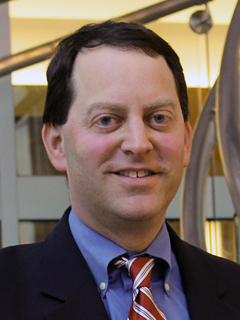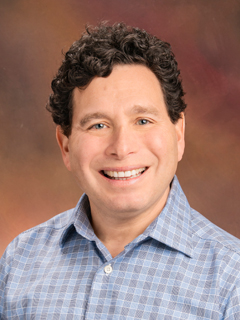HOW CAN WE HELP YOU? Call 1-800-TRY-CHOP
In This Section
10-year Milestone for Violence Prevention Research and Programming
Editor’s Note: This year, The Center for Violence Prevention at Children’s Hospital of Philadelphia celebrates 10 years of programming and research. Co-directors Joel Fein, MD, MPH, and Stephen Leff, PhD, reflect on the work accomplished in the Center over the last decade. Dr. Fein’s research evaluates how to best reduce the incidence and impact of violence with an emphasis on traumatic stress and the intersection between firearm injury and childhood mental health. Dr. Leff’s research focuses on taking a community-based participatory research approach to develop aggression and bullying prevention programming by partnering with key stakeholders to ensure programs are both effective and community-responsive. More recent program development has an emphasis on diversity, inclusion, and anti-racism.
The Center for Violence Prevention (CVP), formerly the Violence Prevention Initiative, was established at CHOP in 2013. What propelled its creation?
After the mass shooting at Sandy Hook Elementary School in December 2012, CHOP’s then Chief Executive Officer Steven M. Altschuler, MD, made the decision to put resources into violence prevention. As a top children’s hospital in the nation, he felt it was CHOP’s responsibility to develop a comprehensive initiative that could not only be influential locally to our patients and community, but also serve over time as a national model for hospital-led violence prevention programming, training, and research. He made the decision to bring together work that was already being done at CHOP under one umbrella, which is how the Center for Violence Prevention, formally the Violence Prevention Initiative, was established.
Since violence is rarely experienced in isolated ways, our Center brings multimodal prevention and intervention programming to youth and families at multiple touchpoints across clinical, school, and neighborhood settings throughout a child’s lifespan. CVP provides the infrastructure for CHOP-based programs, services, and research.
Today, our multidisciplinary faculty and staff conduct research, help shape policy, engage community partners, and create, implement, and refine evidence-based interventions. CVP applies a trauma-informed, anti-racist lens to community programs and activities as well, promoting community resilience and supporting diversity of staff and faculty.
What are CVP’s pillars, and how has research conducted in the Center evolved over the years?
CVP started with four focus areas that we call “pillars,” and these areas have grown to include six pillars. Our expansion and refinement of programs is always based on information that we gather from our hospital and community stakeholders. Each pillar has its own directors who lead multiple aspects of the work. CVP’s current pillars are Aggression and Bullying Prevention, Community Violence and Trauma Support, Intimate Partner Violence Prevention, Suicide Prevention, Gun Safety, and Professional Development and Training.
Over the years, we have progressively integrated our research and program activities so that they learn from and support each other. Our Center’s research efforts include quality improvement, mixed methods research, implementation science, secondary data analyses, and clinical trials.
CVP integrates community-based participatory research (CBPR) methods as much as possible to elevate each area to the next developmental stage. Our CBPR approach combines evidence-based strategies with the voice and feedback of those most impacted by our programs. In this manner, we know that our programs represent best practice and are uniquely designed to meet the needs of our youth and families.
CVP scholars and associates represent 17 divisions and departments throughout CHOP. How does this approach inform your research?
Our CBPR approach involves violence prevention stakeholders throughout the CHOP enterprise. The diversity in disciplines of our faculty and staff, and the neighborhood and community connections that they offer, provide unique insights as we implement and evaluate programs both inside and outside of hospital walls. This approach helps our experts more accurately inform and advise policymakers and other key constituents. Through CVP, our scholars and associates can stay connected to each other and informed about each other’s progress through meetings and newsletters.
It’s clear that CVP has achieved many major milestones throughout 10 years of research and programming. Tell us about one or two examples that stand out to you.
There are many noteworthy milestones that CVP has achieved over the years, which would not have been possible without the dedication and hard work of our staff. Many of these examples are highlighted in our 10-year anniversary report, The Center for Violence Prevention: The First Decade and Beyond.
We are happy to share a couple examples from our two largest pillars:
- Bullying and Aggression Prevention: Our team has worked with more than 50 schools in the School District of Philadelphia since 2013. CVP’s bullying prevention programming has been associated with a 70% success rate at decreasing aggression, improving problem-solving, empathy, and self-confidence for intervening. We also had the first program in the country to decrease relational aggression among girls attending urban schools, in part by teaching problem-solving skills while giving leadership opportunities to the formerly aggressive girls so that they could demonstrate their new positive skills to classmates.
- Community Violence and Trauma Support: Our team offers intensive case management and mental healthcare to violently injured and traumatized youth and their families. It has been rewarding to see youth who have been through our programs become leaders for our trauma-informed youth groups and in family-serving systems outside of CHOP. One focus of our research is to capture the voices of our clients and front-line providers to learn what best serves families and apply that knowledge to program improvements.
Could each of you share a program success story that reminds you why you chose to do the work you do?
Dr. Leff: One of the things I am proudest of is that our team created the first relational aggression (e.g., decreasing gossip and social exclusion) intervention in the nation for girls attending urban schools. The program, called Friend to Friend, teaches girls problem-solving and anger management strategies through small group interventions, then highlights their leadership abilities when they return to the classroom to teach their peers the positive techniques they have learned.
In one of our schools, a principal called me to share that when a conflict arose among several seventh-grade girls, one of the girls reminded the others of the “Friend to Friend” strategies they learned three years earlier, like recognizing their face and body signs of agitation, staying calm using deep breathing and visual imagery, and then examining the situation to determine the other’s intention. They talked through the challenging issue instead of engaging in physical altercation. The principal was so impressed that she created a “Principal’s Corner” where she displayed the program strategies so that everyone would be reminded to utilize them.
This phone call from the principal highlights how with the right support and structure, schools can use the strategies we are teaching to not only benefit from them in the moment, but also to institutionalize them so that they are part of the culture and fabric of a healthy, safe school climate.
Dr. Fein: In September 2013, a 12-year-old girl entered the CHOP Violence Intervention Program (VIP) after being shot in the arm and the abdomen while walking home from the store with her 14-year-old sister. As a result, both the girl and her sister had profound post-traumatic stress disorder.
Although she healed physically over time, both girls’ emotional symptoms worsened; they were unable to sleep at night and startled by loud noises. They suffered anxiety attacks and intrusive thoughts. CHOP VIP immediately referred them both for trauma-focused cognitive behavioral therapy and enrolled them in cyber school where they felt safe enough to participate from their brother’s home. We filed a Victim’s Compensation application and helped the family navigate the legal system, but the girls’ fears were complicated by the fact that the perpetrator was never arrested, and the police stated they had no leads.
It became evident that the family needed to move for the girls to heal and feel safe again. CHOP VIP helped the family find alternative living arrangements outside of Philadelphia. They moved into their new home a few months later, which gave the family the security they needed to begin to heal and relieve their fears.
The girls also started to attend the trauma-informed BRAVE psychoeducational groups. By sharing their experiences with other peers who had been through similar experiences, they learned about their trauma symptoms and began to heal. It's now ten years later and the girls are doing very well. Both are gainfully employed and one of them has even started her own family.
Looking ahead, what do you hope the next decade holds for CVP researchers?
While we are proud of what we have been able to accomplish over our first 10 years, we also realize that our work is far from complete. No child should ever experience trauma or violence, but if they do, they should not have to heal and recover alone. We hope to be here for them, creating new pathways for healing through our research – now and into the future.
While all our pillar directors have specific goals for their areas of work, our hope as a Center is to scale and disseminate our programs much more widely over the next decade. This looks different for each pillar and program, but it will include integrating our work into more locations within the CHOP enterprise, as well as making our programs more accessible to children and families in Philadelphia and beyond. We also hope to recruit current and future national leaders in violence prevention research, and to continue to create innovative, cutting-edge approaches to addressing violence prevention.





